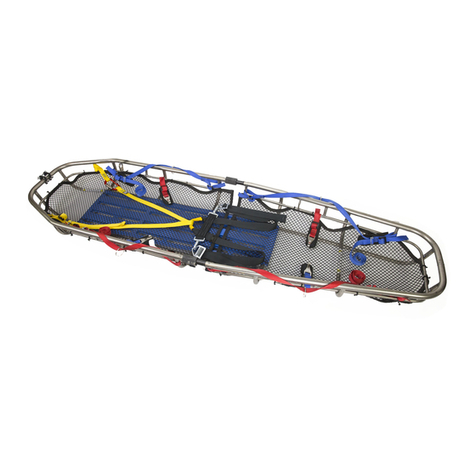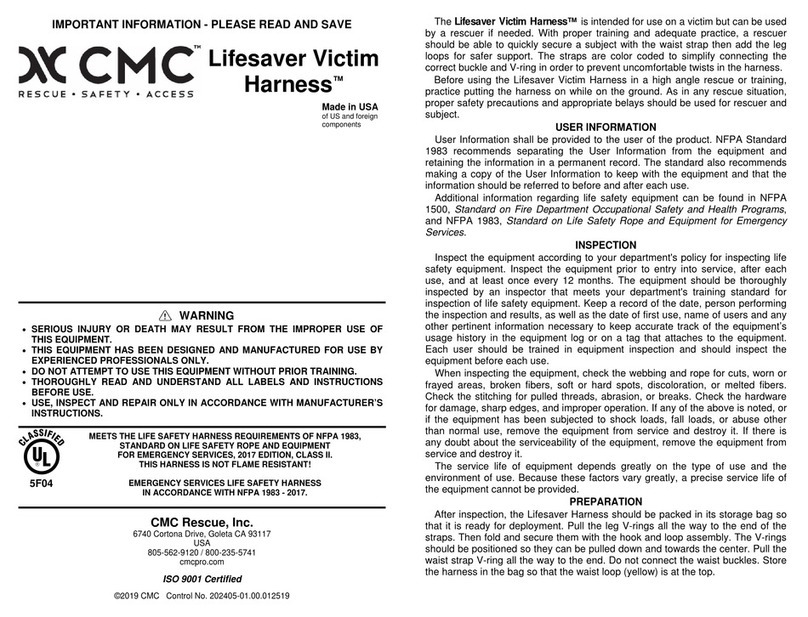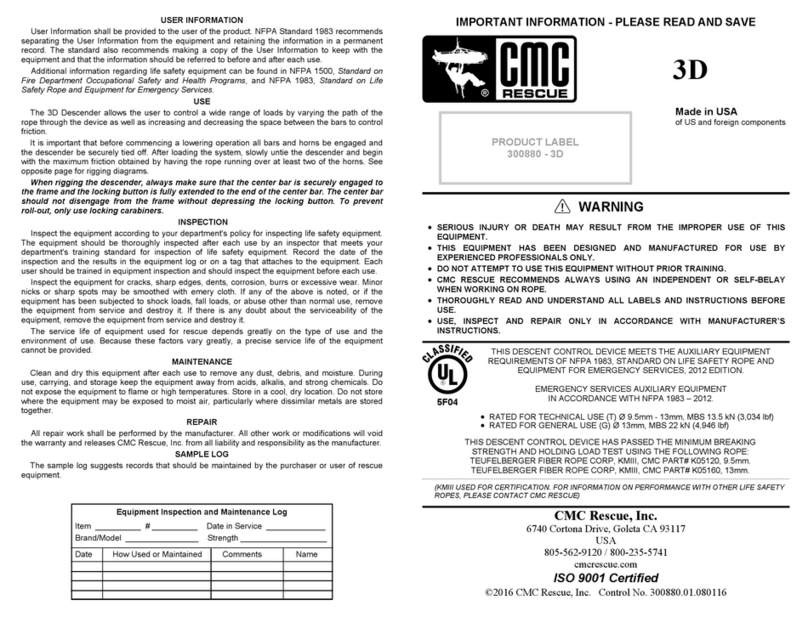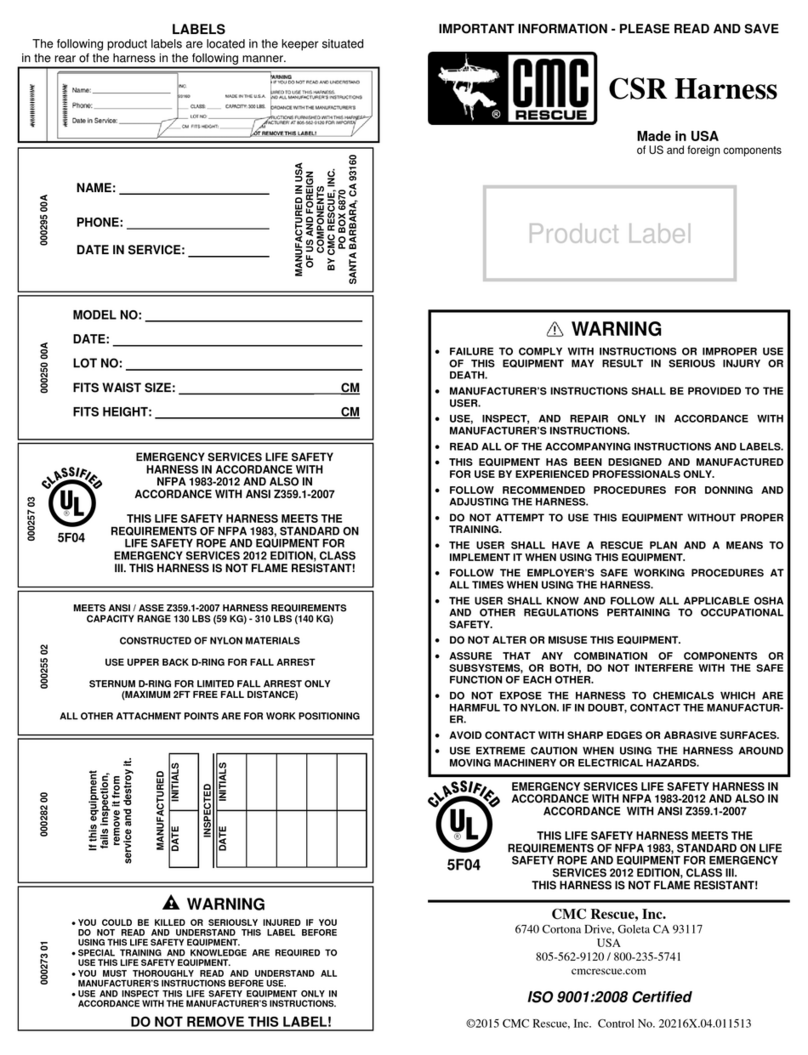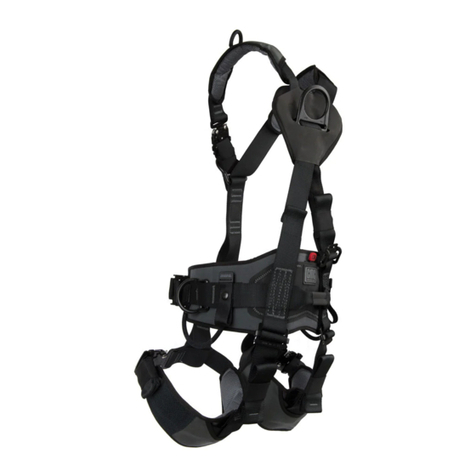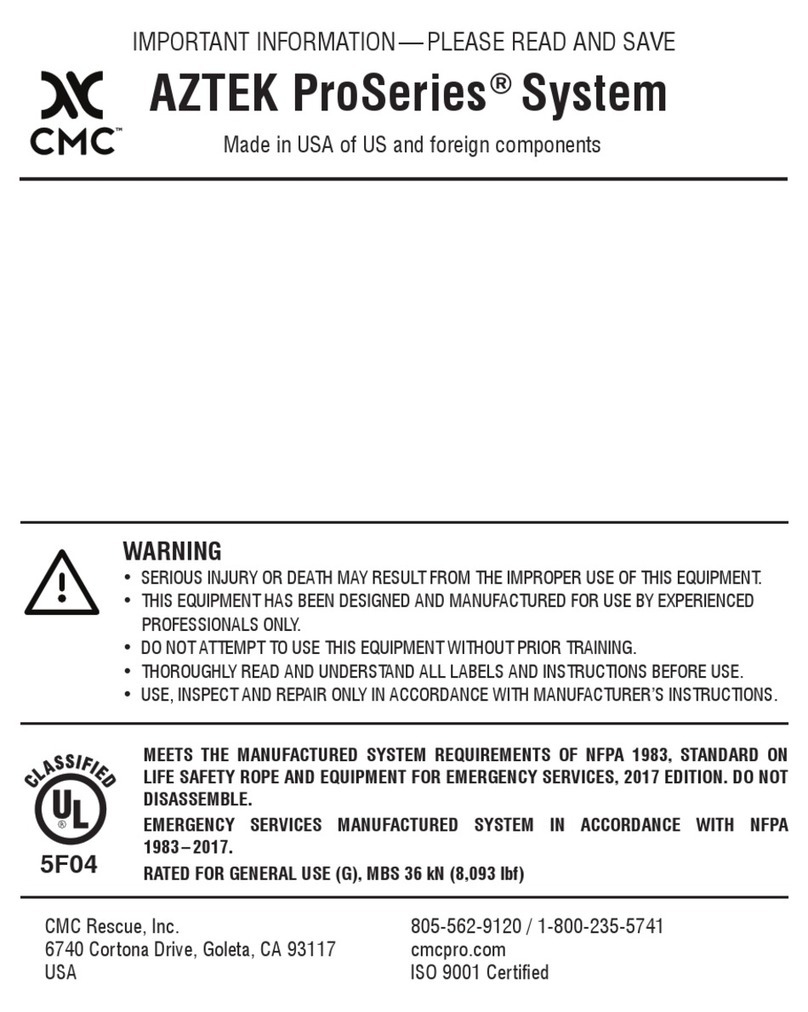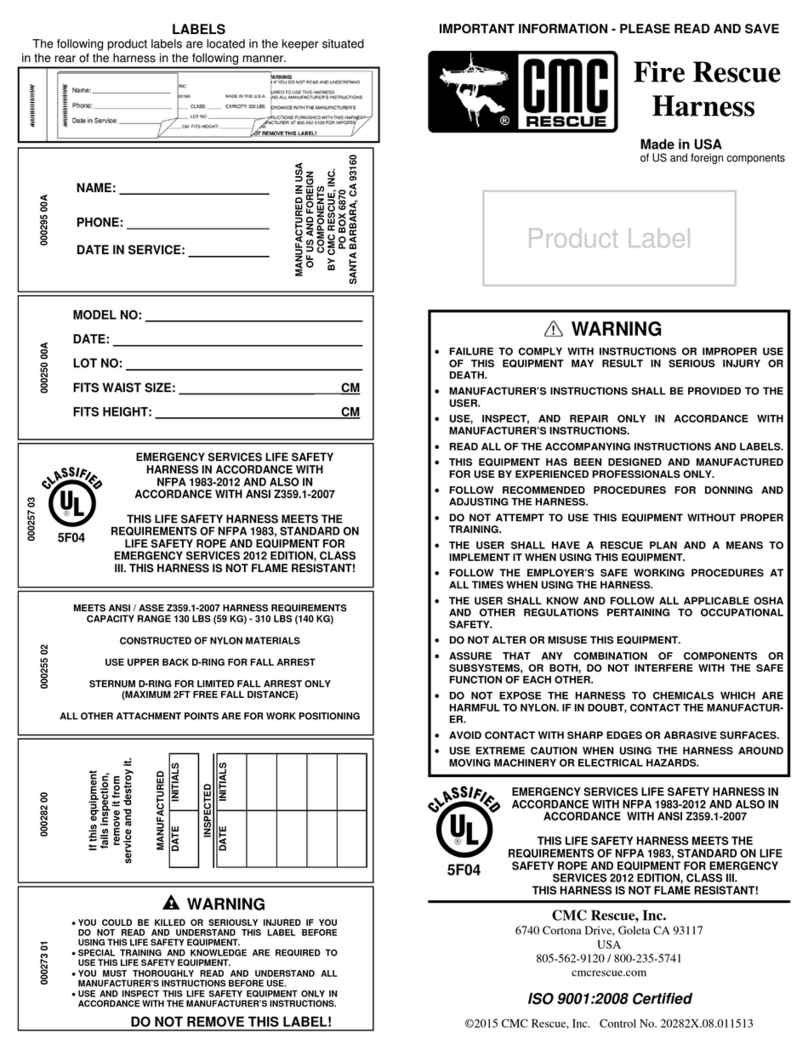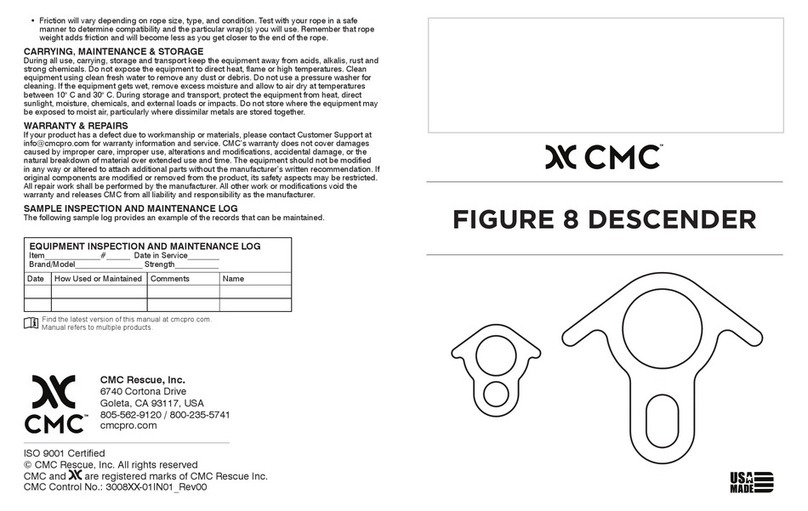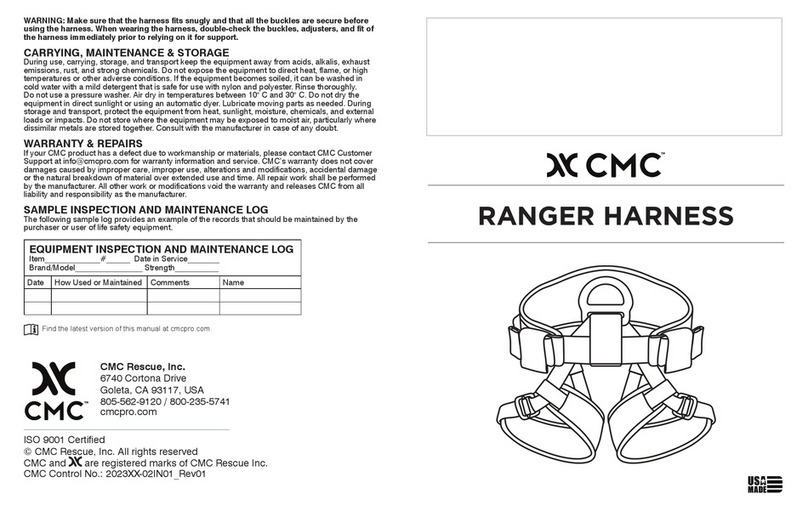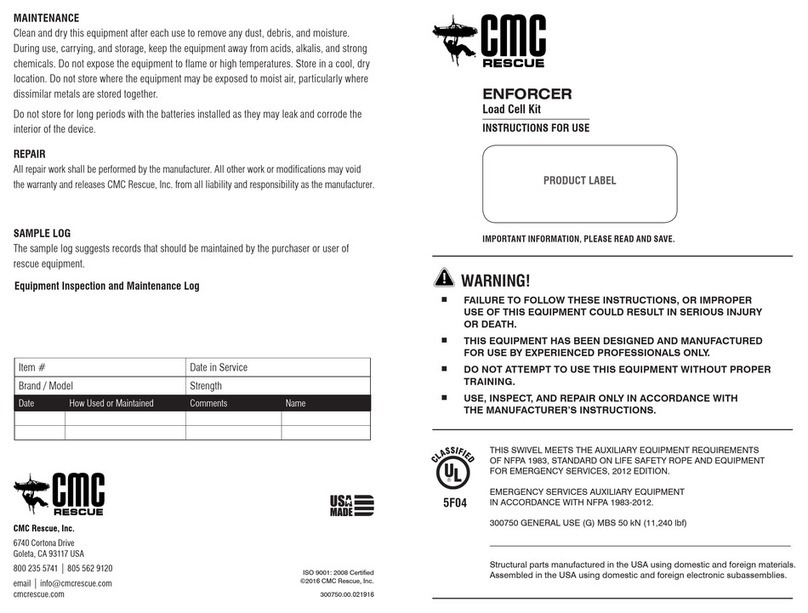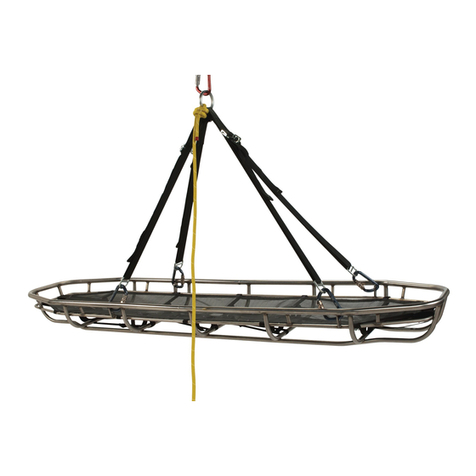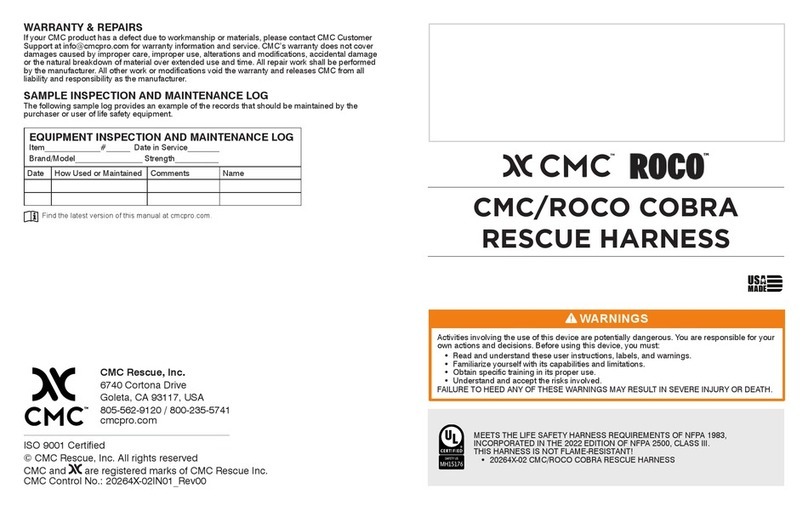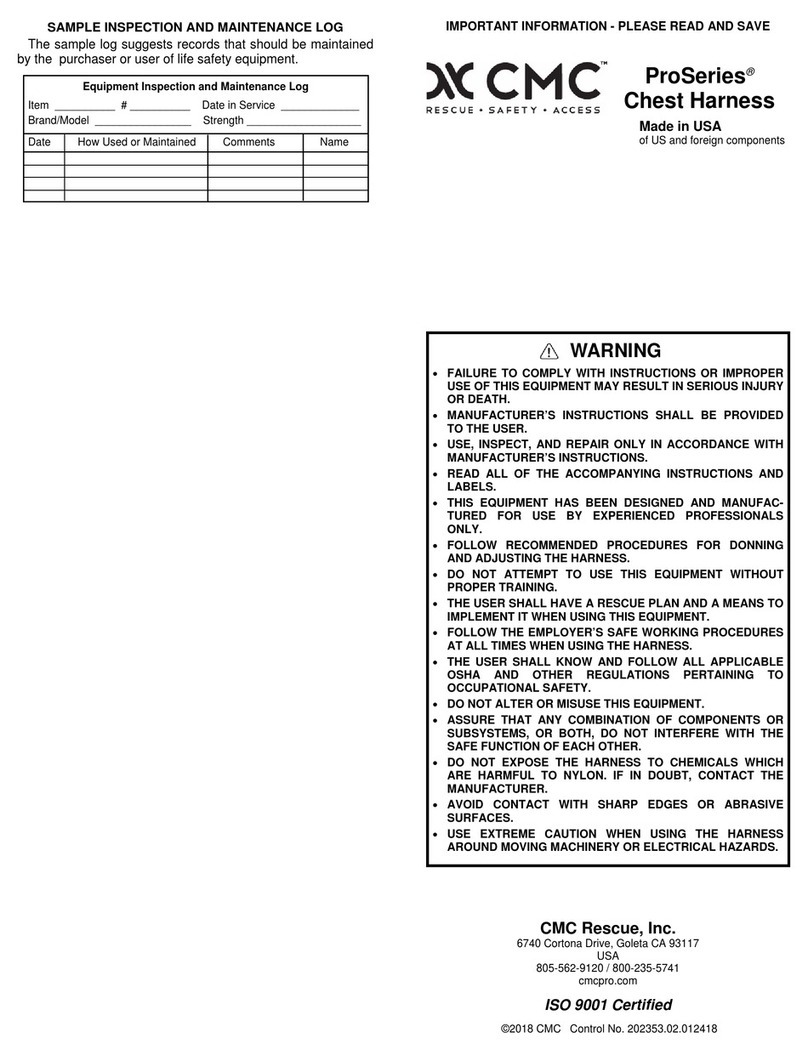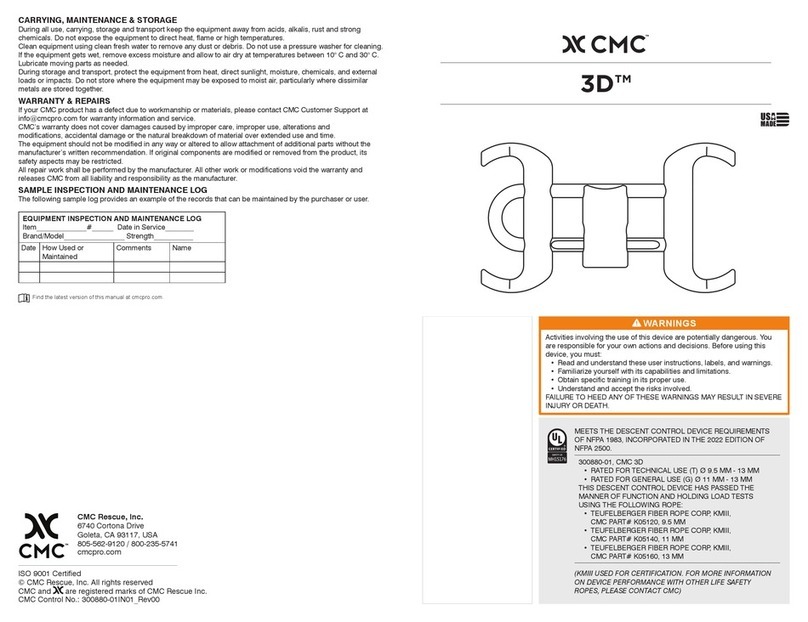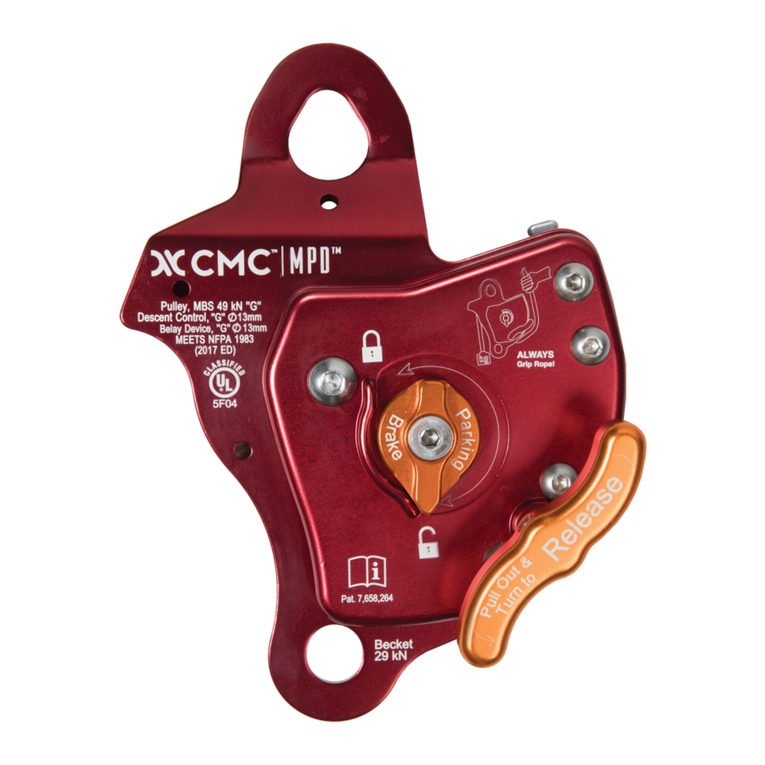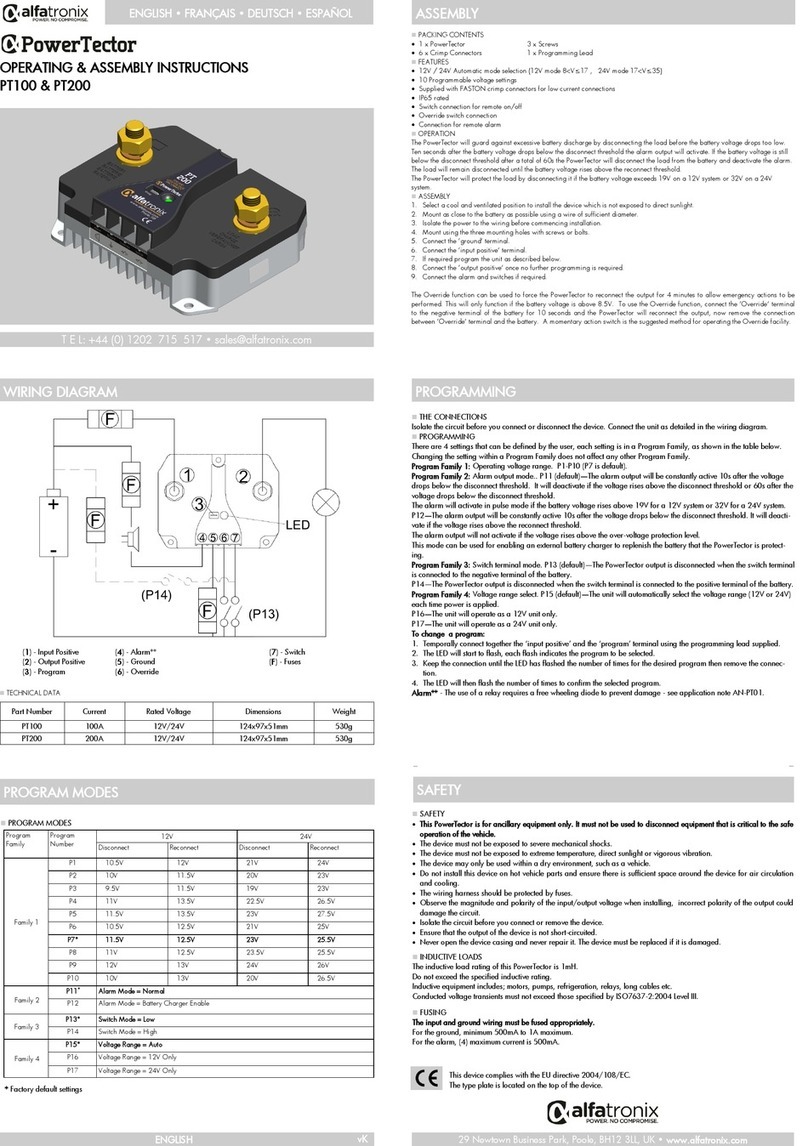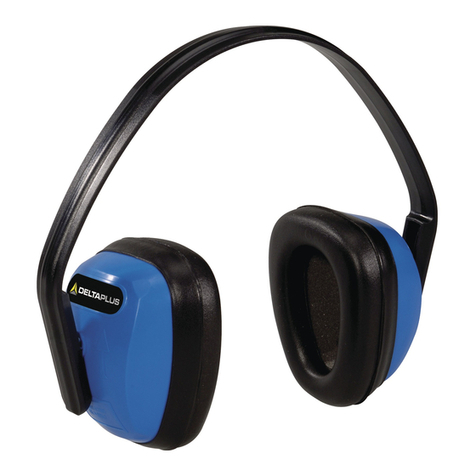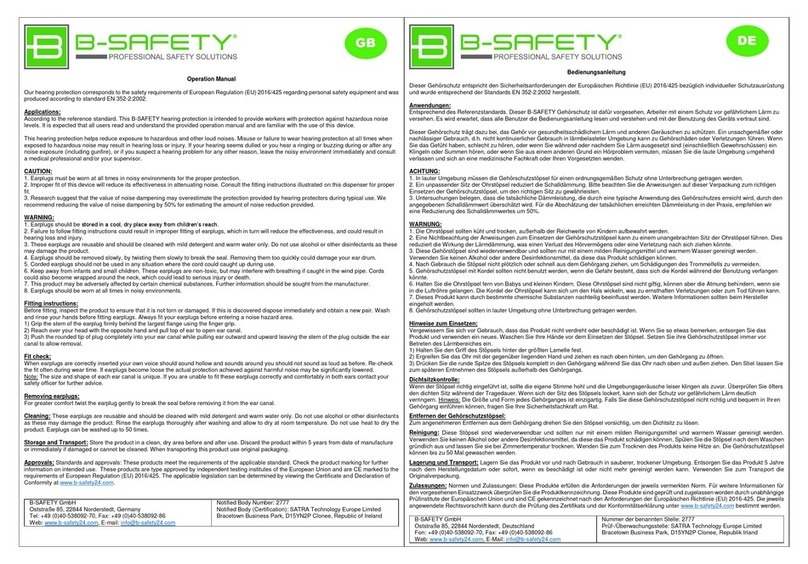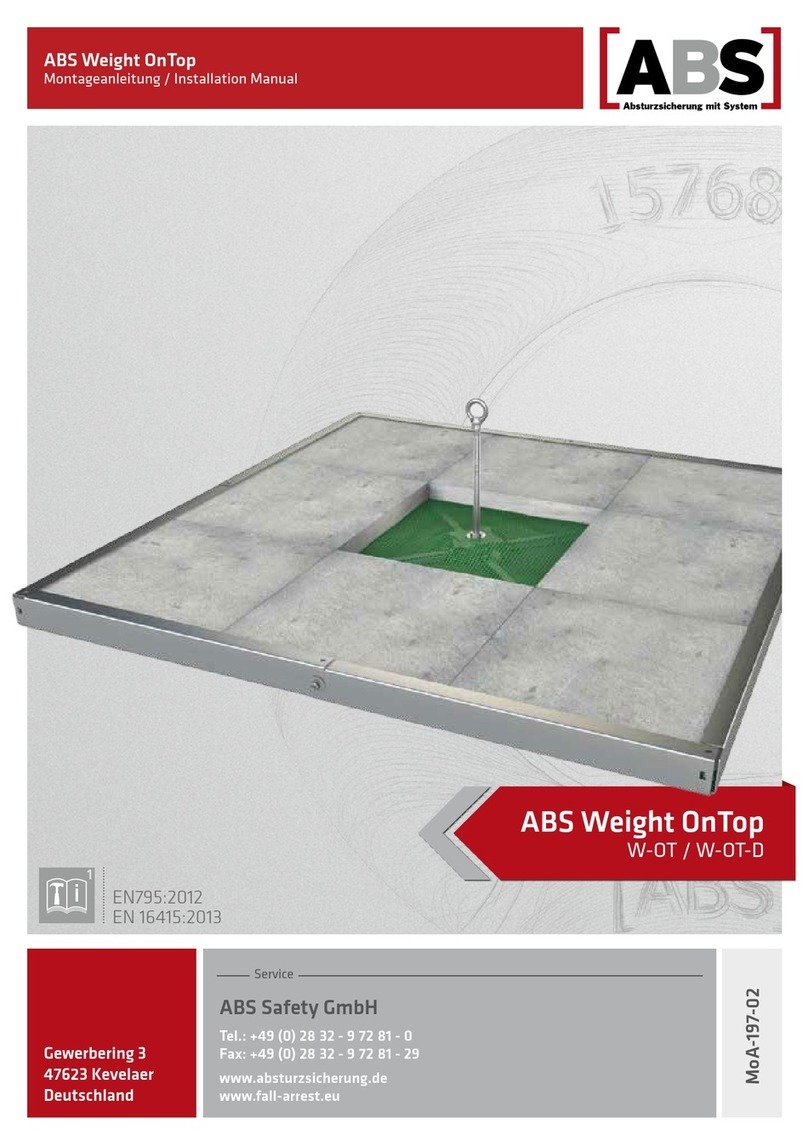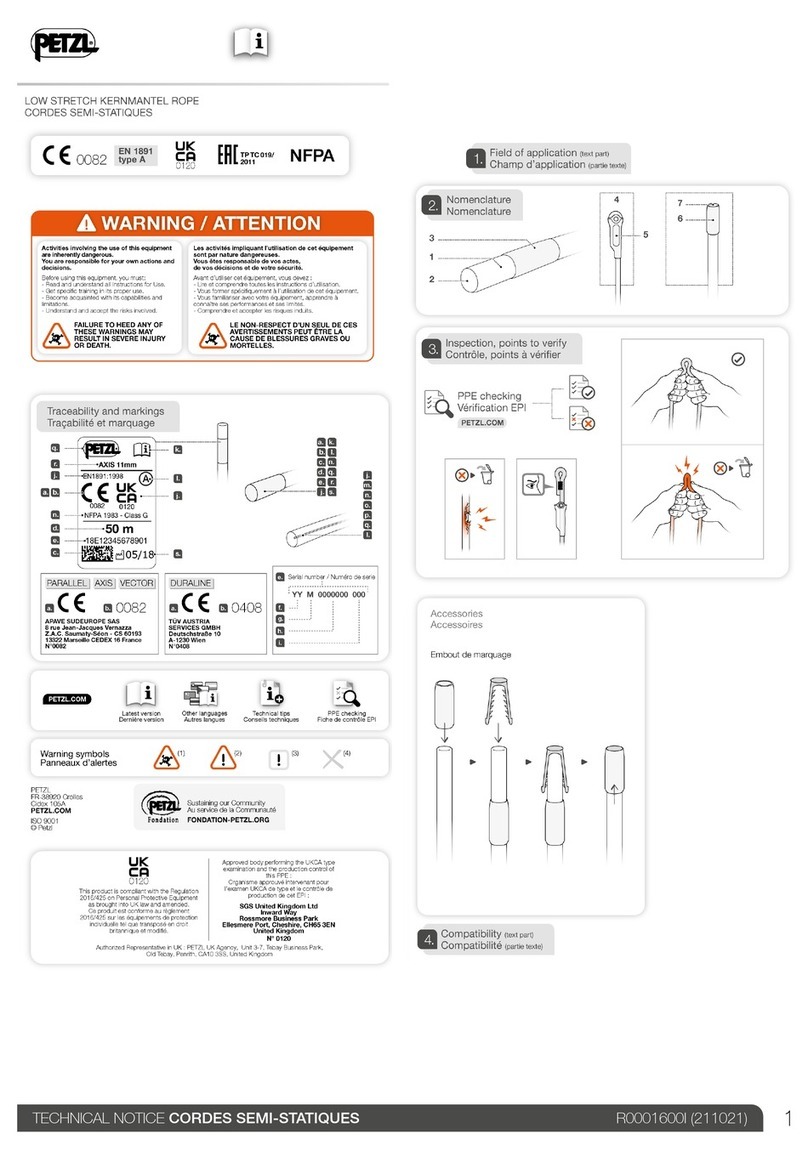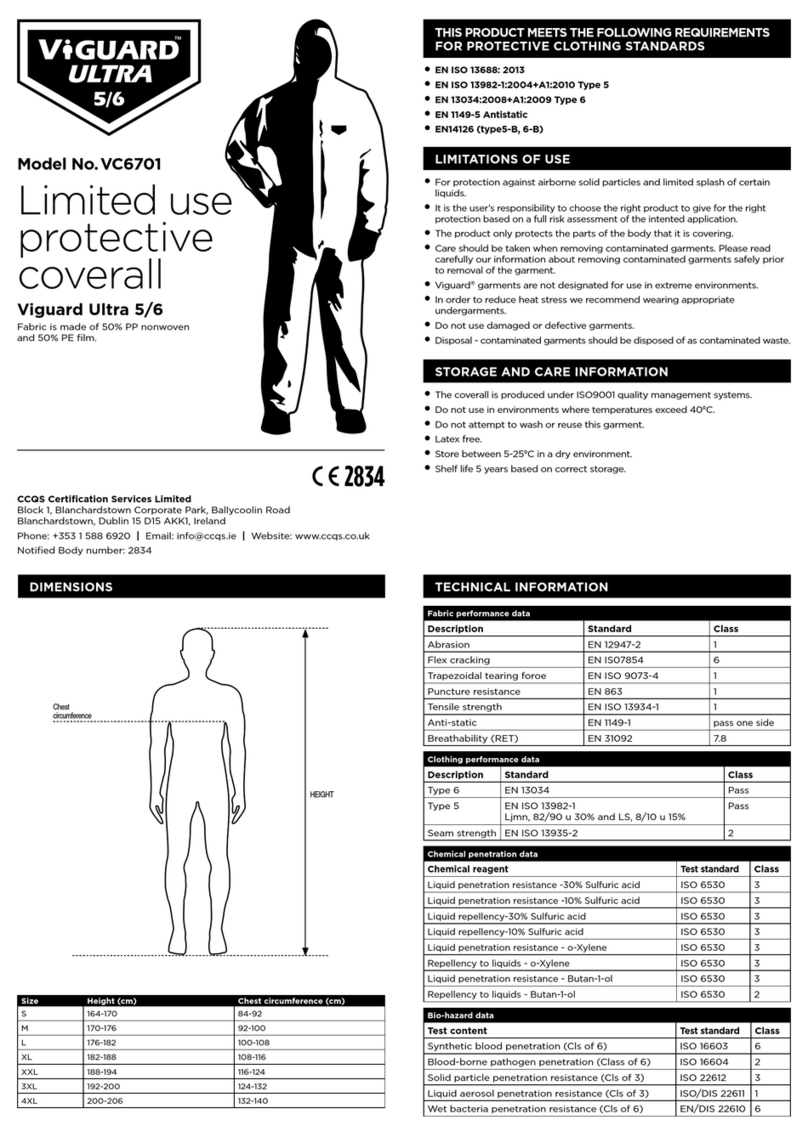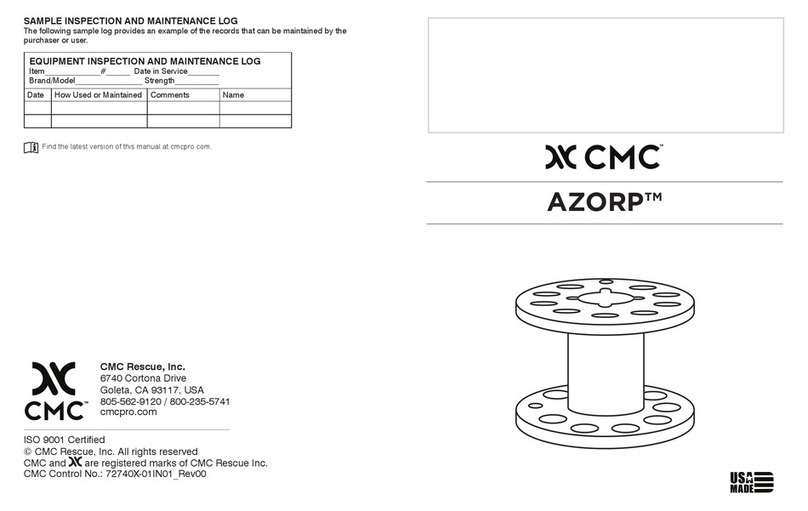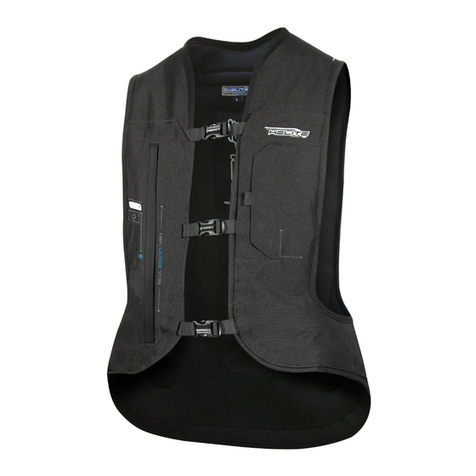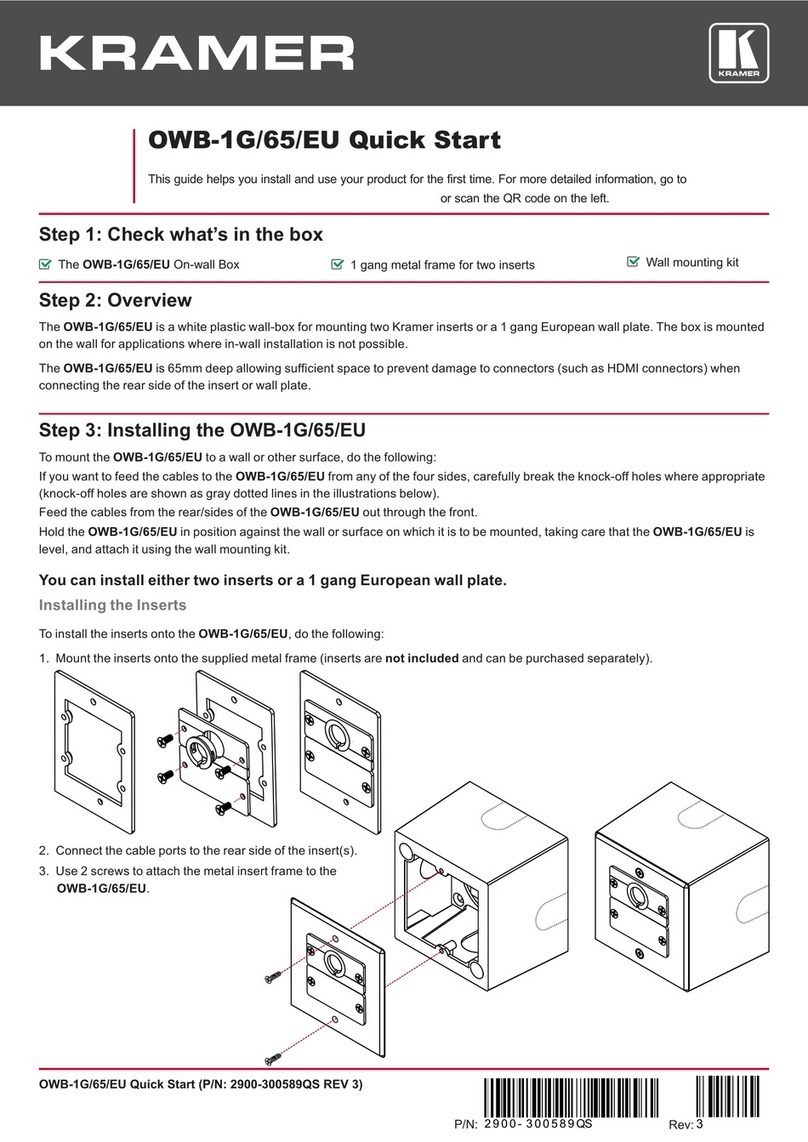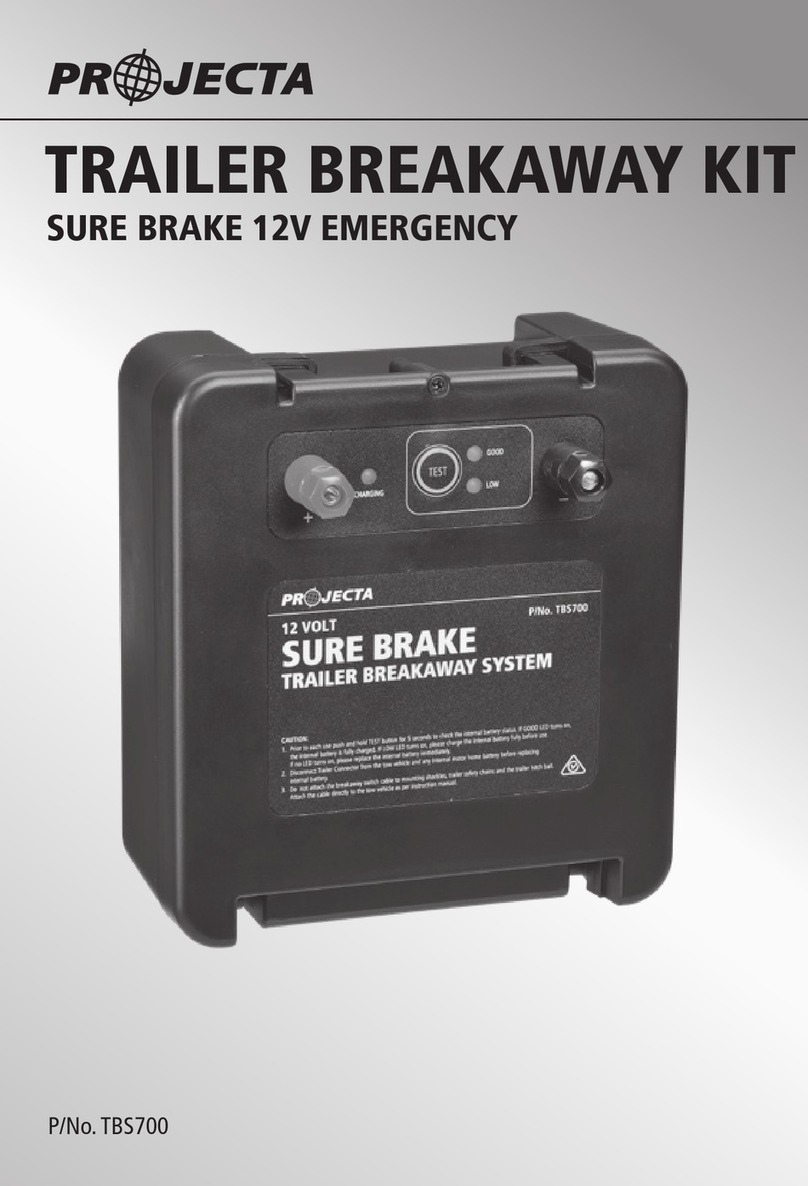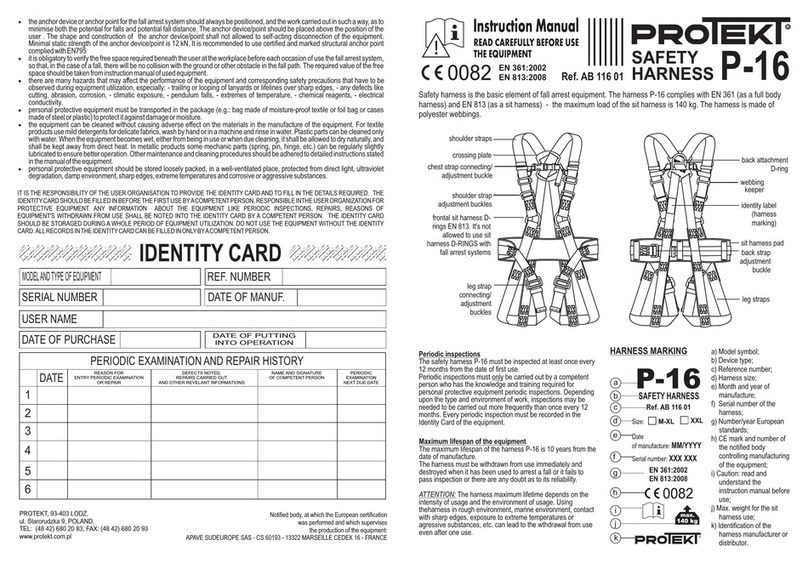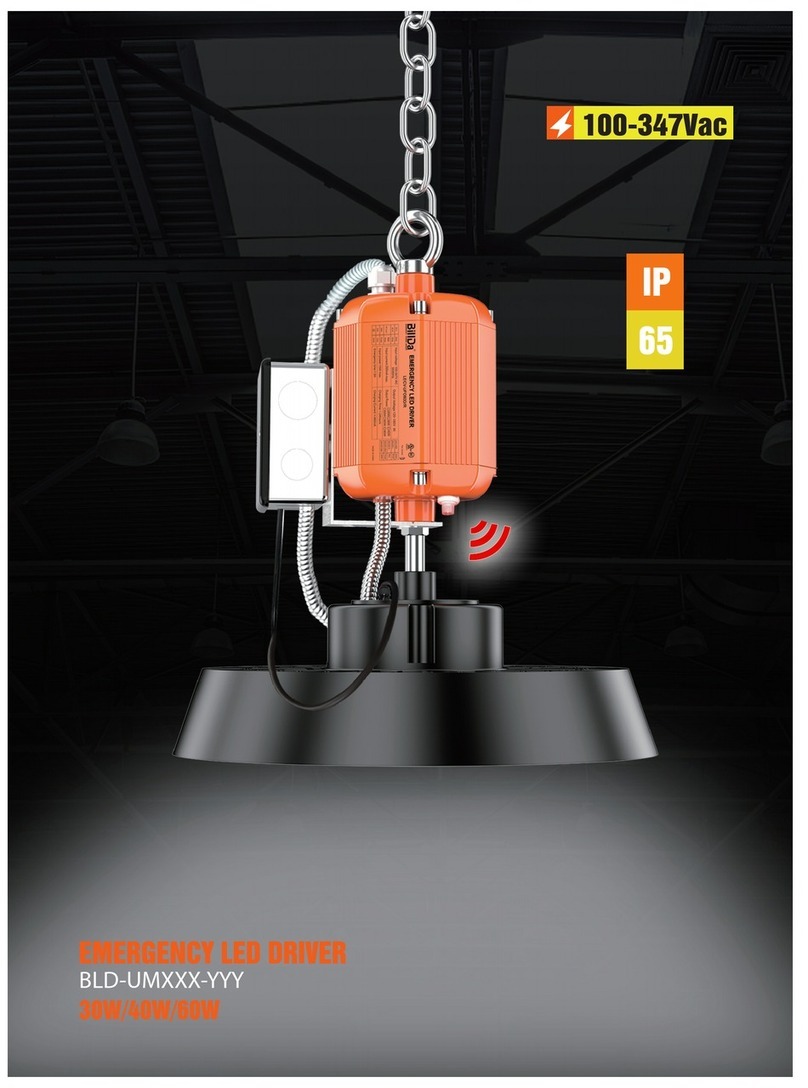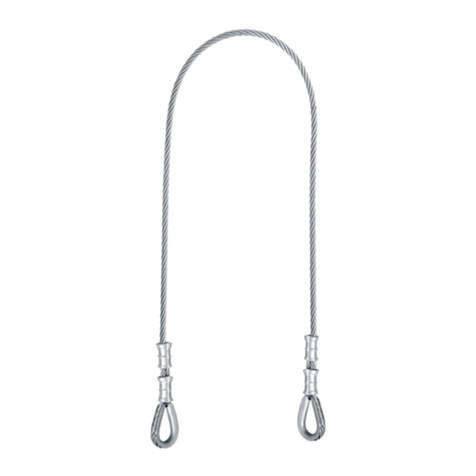
The CMC Rescue and CMC ProSeries®Rescue
Harnesses are designed for multi-purpose use in fire/
rescue, industrial, and rope access work applications.
The harness’ light weight and ease of donning and doffing
appeal to emergency responders who must act quickly.
HARNESS CERTIFICATION AND USE
Rescue and work harnesses from CMC Rescue are
designed to comfortably support the wearer, creating a
safe work platform. Because our harnesses are used
when working at heights, they are also built with the
strength to catch a fall. Depending on the intended use
(rescue, rope access or fall protection) harnesses are
tested to specific standards set by the applicable industry.
Rescue: NFPA 1983 - 2012 provides specifications for a
rescue harness. All front and back D-ring connection
points are dynamically and statically tested to this
standard.
Rope Access Work: A harness selected for rope access
work needs comfort and support very similar to a rescue
harness, which is not available in a harness designed
solely for fall arrest applications. Depending on the
applicable regulations, fall protection may also be
required. When so labeled, CMC Rescue harnesses
are independently certified to meet ANSI Z359.1-2007.
USER INFORMATION
User Information shall be provided to the user of the
product. NFPA Standard 1983 recommends separating
the User Information from the equipment and retaining
the information in a permanent record. The standard also
recommends making a copy of the User Information to
keep with the equipment and that the information should
be referred to before and after each use.
Additional information regarding auxiliary equipment
can be found in NFPA 1500, Standard on Fire
Department Occupational Safety and Health Programs,
and NFPA 1983, Standard on Life Safety Rope and
Equipment for Emergency Services.
INSPECTION
Inspect the equipment according to your department's
policy for inspecting life safety equipment. The equipment
should be inspected after each use by an inspector that
meets your department's training standard for inspection
of life-safety equipment. Record the date of the inspection
and the results in the equipment log or on a tag that
attaches to the equipment. Each user should be trained in
equipment inspection and should do a cursory inspection
before each use.
The service life of equipment used for rescue depends
greatly on the type of use and the environment of use.
Because these factors vary greatly, a precise service life
of the equipment cannot be provided.
When inspecting the equipment, check the webbing for
cuts, worn or frayed areas, broken fibers, soft or hard
spots, or discoloration. Check the stitching for pulled
threads, abrasion, or broken stitches. If any damage is
noted, the equipment should be removed from service.
If the equipment is dropped or impact loaded, it should
be inspected by a qualified inspector prior to being
returned to service. In most cases, a visual inspection will
not be able to determine if the equipment has been
damaged. Based on the history of the incident, if there is
any doubt regarding the safety of the equipment, it should
be removed from service and destroyed.
PUTTING ON YOUR HARNESS
1. Loosen the waist and leg adjusting buckles to make
the diameter large enough to pull over your thighs
and hips. Hold the harness by the waist and step
through the waist belt and pull the belt up around your
waist.
2. Adjust the waist strap and leg loops for the most
comfortable fit.
3. Fold the web tails under the Web-Keepers™ and
secure them tightly.
WARNING: Make sure the straps are snug. This
increases the comfort when sitting in the harness and
helps prevent the quick-connect buckles from
disconnecting. When wearing the harness, double-
check the buckles, adjusters, and fit of the harness
immediately prior to relying on it for support.
ATTACHMENT POINTS
• The front waist D-ring is the primary work positioning
attachment point. It allows the user to be in a sitting
position which provides the most comfort and freedom
of movement. The front waist D-ring on the ProSeries
Rescue Harness also serves as an attachment point to
the front of the ProSeries Chest Harness.
• The rear D-ring is intended to provide travel restraint
when working near an edge. The rear D-ring on the
ProSeries Rescue Harness also serves as an
attachment point to the rear of the ProSeries Chest
Harness.
WARNING: To prevent roll out, use only locking
carabiners to attach to D-rings.
USING YOUR HARNESS
CMC harnesses are not intended for rock climbing.
Lead climbing ropes should not be tied into the D-ring or
connected into it with a carabiner.
Do not expose the harness to flame or high
temperatures. Carry the harness where it will be
protected as the harness could melt or burn and fail if
exposed to flame or high temperatures.
The CMC Rescue and ProSeries Rescue Harnesses
are designed for rescue applications in which the wearer
uses the harness primarily for positioning. High impact fall
situations should be avoided. Always keep the safety line
(belay) above the wearer and keep the slack in the safety
line to a minimum.
CARRYING, MAINTENANCE & STORAGE
If the harness becomes soiled, it can be washed in cold
water with a mild detergent. CMC Rescue recommends
the use of LifeLine Cleaner. Dry out of direct sunlight. Do
not dry in an automatic dryer. Store in a cool, dry location.
Keep the harness away from acids, alkalis, exhaust
emissions, rust or strong chemicals during storage or use.
REPAIR
All repair work shall be performed by the manufacturer.
All other work or modifications may void the warranty and
releases CMC Rescue, Inc. from all liability and
responsibility as the manufacturer.
